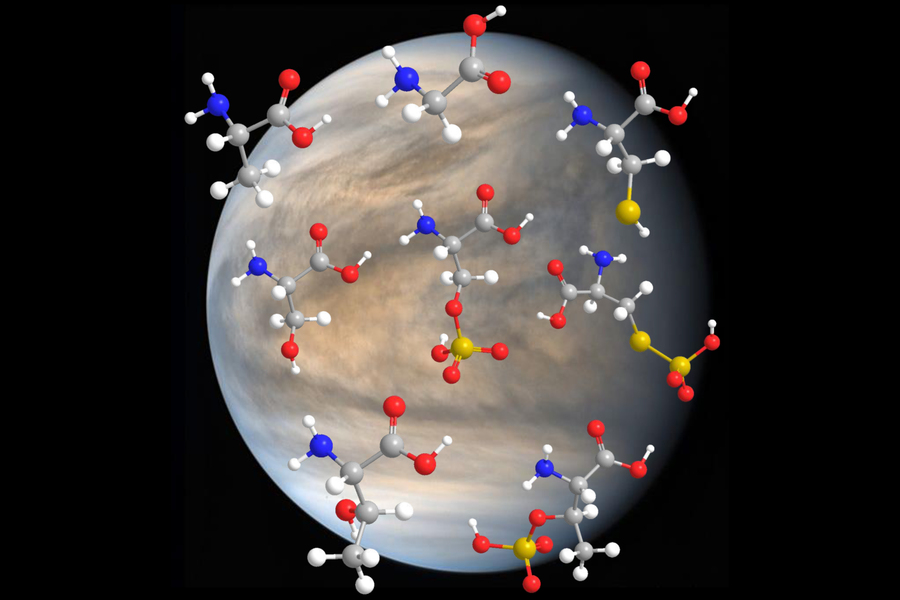Venus, often nicknamed “Earth’s evil twin” because of its hellish surface conditions. For a long time, scientists considered Venus a dead planet when it came to the possibility of life. But recent research has reignited the debate about life in our neighboring planet, especially in its clouds. This article explores the latest findings and their implications for our understanding of Venus’s habitability.
The Venusian Environment: A Hostile Yet Intriguing World
Venus presents a paradox for astrobiologists. Its surface is an inferno, with temperatures reaching 470°C (878°F) – hot enough to melt lead. The atmospheric pressure at ground level is crushing, equivalent to being a kilometer underwater on Earth. Yet, despite these extreme conditions, Venus’s upper atmosphere tells a different story.
Dr. Sara Seager, Class of 1941 Professor of Planetary Sciences at MIT, explains the intrigue: “The cloud layers on Venus are persistent and extend vertically from around 48–70 km above the surface, and they span the entire planet. Moreover, these cloud layers possess the essential prerequisites for supporting life, that is, suitable temperatures for covalent bonds, a liquid environment (comprising cloud droplets), and an energy source in the form of sunlight.”
The Building Blocks of Life in Sulfuric Acid

A groundbreaking study published in the journal Astrobiology has challenged our assumptions about the potential for life in Venus’s clouds. The research team, led by Maxwell D. Seager and including Sara Seager, investigated the stability of amino acids – fundamental building blocks of life – in concentrated sulfuric acid, which comprises Venus’s cloud droplets.
The results were surprising. Out of 20 biogenic amino acids tested, 19 showed remarkable stability in concentrated sulfuric acid. Eleven remained completely stable, while eight underwent modifications only in their side chains, leaving the crucial amino acid backbone intact.
Maxwell Seager emphasizes the significance of these findings: “Just showing that this backbone is stable in sulfuric acid doesn’t mean there is life on Venus. But if we had shown that this backbone was compromised, then there would be no chance of life as we know it.”
Implications for Venusian Life
These results open up new possibilities for life on Venus. If amino acids can persist in the planet’s sulfuric acid clouds, it suggests that more complex organic molecules might also be stable in this environment. This stability is a crucial prerequisite for the potential existence of life.
Dr. Janusz Petkowski, a research affiliate at MIT, notes the paradigm shift these findings represent: “What is absolutely surprising is that concentrated sulfuric acid is not a solvent that is universally hostile to organic chemistry. We are finding that building blocks of life on Earth are stable in sulfuric acid, and this is very intriguing for the idea of the possibility of life on Venus.”
The Phosphine Debate
The discussion about life on Venus gained momentum in 2020 with the controversial detection of phosphine in the planet’s atmosphere. Phosphine is considered a potential biosignature, as it’s strongly associated with biological processes on Earth.
While the presence of phosphine remains debated, with various studies supporting and challenging the initial claim, it has spurred renewed interest in Venus exploration. As The Planetary Society reports, “The verdict on whether phosphine exists in the clouds of Venus, and whether its presence would mean there were life forms producing it, is still very much undecided.”
Future Exploration and Challenges
The search for life on Venus faces significant challenges. The planet’s extreme surface conditions make traditional exploration methods, like those used on Mars, nearly impossible. However, several missions are planned to investigate Venus’s atmosphere more closely.
Sara Seager is involved in one such mission, backed by Rocket Lab, which aims to send a spacecraft through Venus’s clouds to analyze their chemistry for signs of organic molecules. This mission, scheduled for launch in January 2025, could provide crucial data about the potential for life in Venus’s atmosphere.

Conclusion
While the existence of life on Venus remains unproven, recent research has significantly expanded our understanding of what’s possible. The stability of amino acids in sulfuric acid challenges our preconceptions about habitable environments and opens up new avenues for exploration.
As Sara Seager concludes, “I think we are just more happy than anything that this latest result adds one more ‘yes’ for the possibility of life on Venus.” As we continue to explore our sister planet, we may need to radically rethink our definitions of life and the conditions under which it can thrive.
The journey to understand Venus and its potential for harboring life is just beginning. Each new discovery brings us closer to answering one of the most profound questions in science: Are we alone in the universe?
